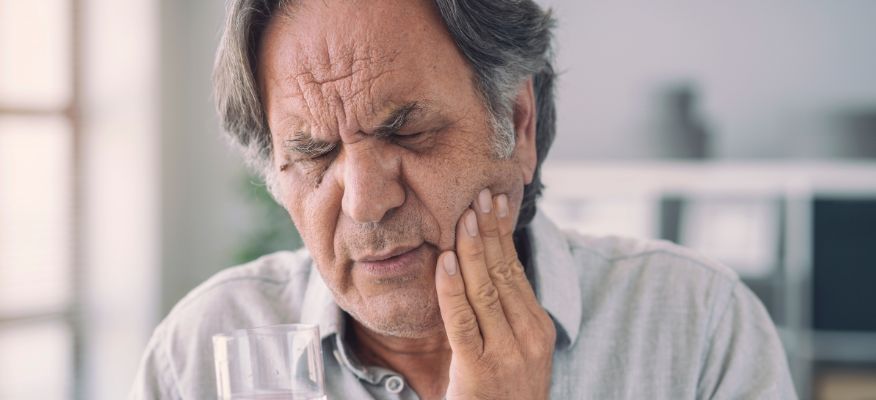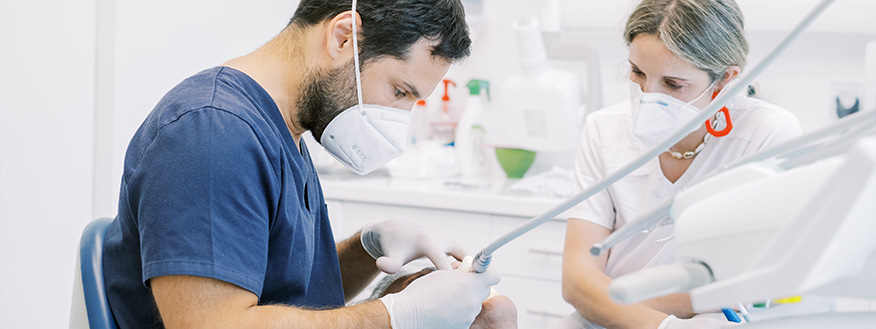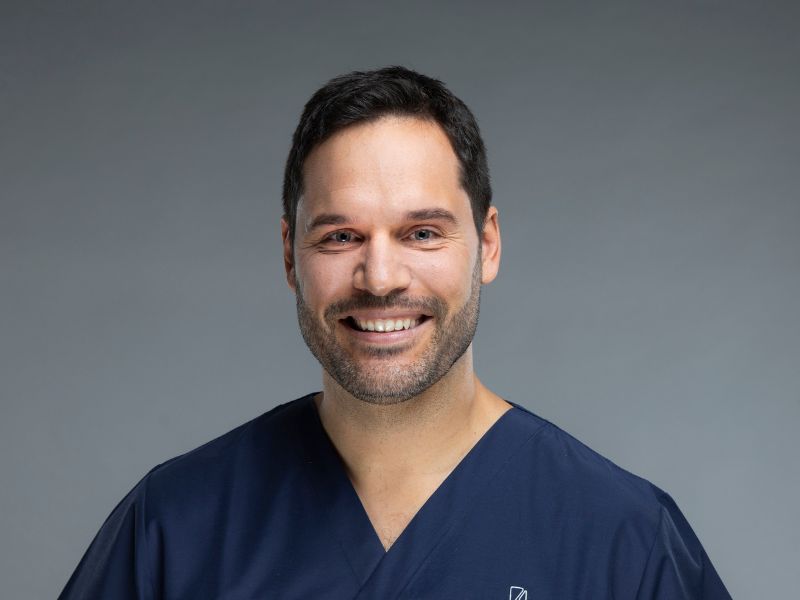
Toothache is one of the most severe pains a human being can experience. Unfortunately, most people experience this unpleasant sensation at least once in their lives.
Due to its acute nature and its high level of pain, it is highly disabling for the person who feels it.
But why do we have toothaches?
There are two different scenarios for the onset of toothache. For a better understanding, it’s important to understand the constitution of teeth.
Although teeth look like lifeless, solid, mineral structures, the truth is that they are made up of several mineralised layers that house vital structures. The innermost layer is made up of dentin, which is surrounded at crown level by enamel and at root level by cementum.
Inside this dentin is a chamber and one or more canals that house the tooth’s pulp tissues. These tissues are made up of connective tissue, blood vessels (small arteries and veins) and nerve tissue. When these pulp tissues become inflamed for any reason, toothache occurs.
Another cause of toothache is when the inflamed tissues are not inside the teeth, but in the tissues surrounding them. This is, for example, why a devitalised tooth can show painful symptoms.
Although each tooth has its own nerve branch, it has a common origin for all teeth. In other words, in the upper jaw we find the upper maxillary branch of the trigeminal nerve and in the lower jaw the mandibular branch of the trigeminal nerve.
This is why pain caused by a specific tooth can be reflexive to the point of being felt in another tooth, in several teeth simultaneously, in the other jaw or even in regions close to the ear and in the frontal and lateral regions of the face.
Why does inflammation of the intra-pulpal tissues occur?
The most common cause of pulp inflammation is a dental cavity. Usually caused by poor oral hygiene, dental cavities develops chronically, initially affecting the external tissues and progressing to the inside of the tooth.
When this disease reaches the pulp or pulp neighbourhood, the inflammation referred to above sets in. Other causes of pulp inflammation are dental trauma, severe tooth wear (as in the case of bruxism), deep restorations, sudden temperature differences and excessive orthodontic forces.
What about the tissues surrounding the teeth?
The teeth are attached to the bone by fibres called the periodontal ligament. This ligament also has its own innervation, which in certain cases can become inflamed and be responsible for the pain.
The reasons for this inflammation can be dental trauma, orthodontic movement, fractures, gingivitis and periodontitis and the creation of a periapical abscess after necrosis (cell death of the pulp tissues) or after unsuccessful endodontic treatment (devitalisation).
It is also important to mention the condition of tooth sensitivity, which causes toothache to thermal impulses (hot and cold) and which does not fully fit into the two groups described. In this specific case, there is usually an exposure of part of the root or severe wear of the enamel that leaves internal structures with porous characteristics uncovered.
These holes contain extensions of the pulp nerves, which are capable of being stimulated by terminal impulses, causing pain. As it is not an inflammatory condition, as described above, the pain is usually temporary and the removal of the stimulus brings the pain to an end.
There are other scenarios that can lead to toothache, but where the cause is not in the teeth, but in the structures attached to them due to common innervation. These include earache that radiates to the molar teeth and lower jaw joint (TMJ), sinusitis that radiates to the upper jaw teeth.
Less common is trigeminal neuralgia, which is an inflammation of the nerve trunk itself that can be very painful and radiate to any of the teeth or jaws, as well as regions of the face and tongue.

How do you treat a toothache?
Analgesic and anti-inflammatory drugs such as aspirin, paracetamol, ibuprofen and opioids relieve pain without treating its source. The pain reappears again as soon as the analgesic effect of the medication wears off.
Therefore, the most important thing is a correct assessment of the condition that is causing the pain. In addition to the clinical history and intraoral observation, imaging tests are usually carried out.
Appropriate clinical procedures, such as the removal of a cavity, the drainage of an abscess, the devitalisation of a tooth, an occlusal adjustment or an extraction, are usually sufficient to end the pain.
How to avoid or prevent dental pain?
Brushing your teeth after meals is essential to remove plaque and prevent bacteria from destroying the enamel and creating tooth decay. Flossing and fluoride mouthwash are also essential for healthy teeth.
Situations of possible trauma such as contact sports should be prevented by using mouthguards. Functions such as bruxism (involuntary grinding of the teeth) should be diagnosed early.
The health of the periodontal tissues must be maintained and monitored so that gingivitis and periodontitis do not set in. Regular visits to the dentist, no more than six months apart, are therefore recommended.

Dr. Carlos Almeida
Dentist (Registered with the Ordem do Médicos Dentistas under Nº 5873)
| Exclusive practice in Implantology and Oral Rehabilitation
| Co-Founder of Instituto Dentário do Alto dos Moinhos
